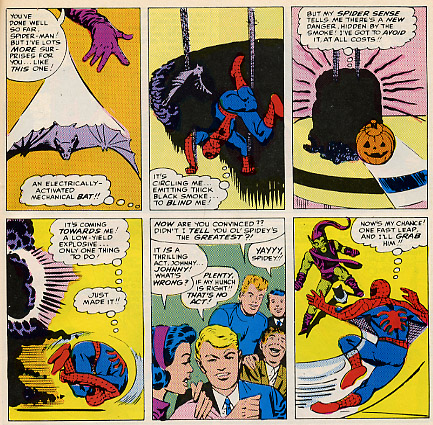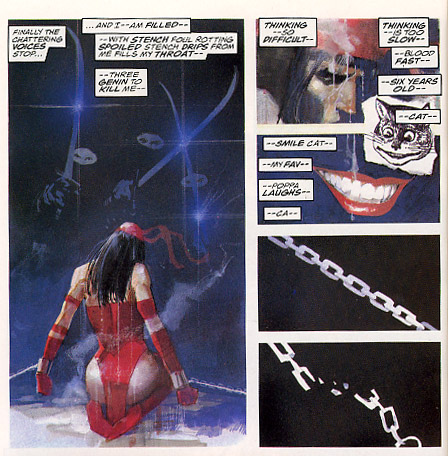Why do we hate thought balloons?

Comics educator and author Scott McCloud calls them the “bulgy Edsels of comics iconography.” Indeed, cloud-like thought balloons are spurned by most comics artists.
Let’s talk about why that is… and whether it’s warranted or not.
Too many thought balloons
In the early days of comic-book history, as artists and writers struggled to build the lexicon of a fledgling art form, it’s no question that the thought balloon was becoming a crutch. Instead of a glimpse into the thoughts of a character, it was a way of explaining action and plot that should have been illustrated instead.
There’s no doubt that the early Lee/Ditko Spider-Man comics were thought-balloon heavy.

In Panel One, the thought ballon “an electrically-activated mechanical bat” attempts to explain a plot feature that should have been conveyed through illustration instead. Panel Two also uses a thought balloon to do the job of the illustration. In fact, you can see it happening throughout the scene above.
As comics art matured, this overuse of expositional and explanatory thought balloons became frowned upon.
And although comics legend Jack Kirby famously used movies as inspiration for his visuals, the comics industry itself was soon regarding Hollywood as a competitor for consumer dollars as well. And comics artists were encouraged to go beyond inspiration, towards emulation.
Comics writer John Ostrander reported that he was forbidden from using thought balloons “because they didn’t have them in movies.”
Although it was a good idea to limit the overuse of thought balloons, the fact remained that conveying inner thoughts efficiently was a necessary part of some storytelling.
When writer/artist Frank Miller presented Elektra’s internal monologue in narration boxes, it quickly became adopted as a replacement for those exposition-heavy thought balloons.

Even today, narration boxes are greatly preferred for internal monologue, and thought balloons are given a weary side-eye. In fact, McCloud considers thought balloons to be patronizing in their very nature! (Somehow the pictogram thought balloons of Asterios Polyp are spared this scorn.)
In defense of the lowly thought balloon
I like thought balloons — used correctly. Those early craftspeople were right in rejecting the thought balloon used as a storytelling crutch. But criminalizing thought balloons entirely is like throwing the baby out with the bath water.
Comics writer Kurt Buseik may have put it best: “Eschewing thought balloons as a creative choice can result in interesting approaches. Eschewing them as a blanket formula, though, is just dumb.”




Recent comments